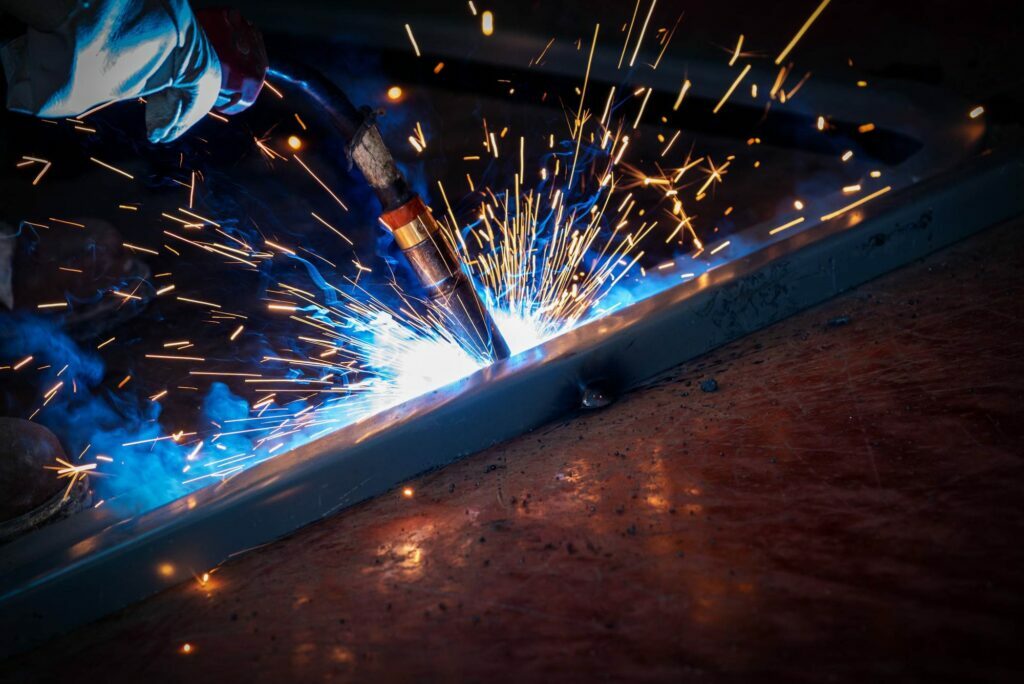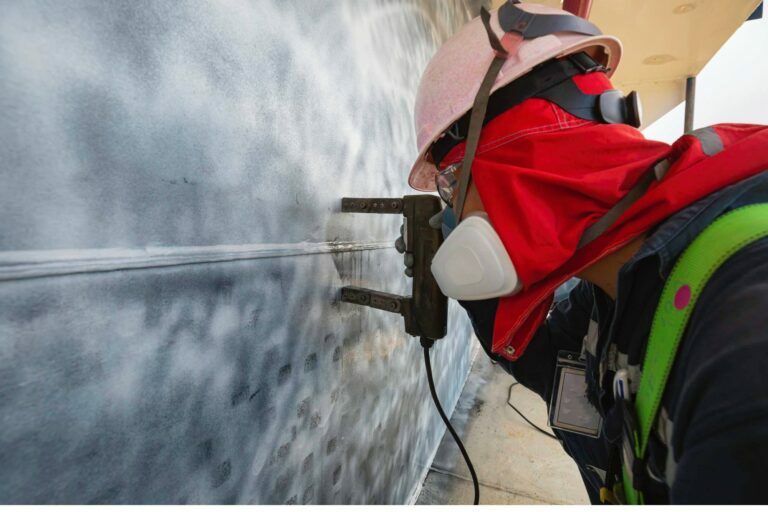For many people, knowing how many amps a welder uses is essential for ensuring that they don’t overload the equipment. This is especially true if the welder is used in an industrial setting, where safety is a top priority.
In general, welders use between 6 and 12 amps of power, depending on the type of welding being done. In this article, you will come to know about how many amps does a welder use?
Welding is a process where two pieces of metal are joined together by heat and pressure. The use of amps is critical to this process because it allows welders to create strong joints. Without the correct amps, welds can be weak and easily break. In addition, improper amps can also cause sparks that could ignite material and start a fire.
Welders have come a long way over the years. The key to a good welder now is the inverter, which takes a standard 120V household current and converts it into the high-frequency current that can be used to weld metals. Inverters are small and lightweight, making them easy to use in tight spaces. They also produce high-quality welds, making them perfect for home projects and repairs.
Additionally, if the amps are too high or too low, they can cause an arc that will not generate enough heat to weld the metal together properly. The type of welding process tells us the power requirement of the welding process. There are three major types of the welding process.
Types of Welding Process And Amp Require For Them

240-volt spot welding equipment will use half the amperage as 120-volt equipment. This is due to the higher voltage providing more heat and a stronger weld.
For example, a 240-volt welder that uses 20 amps will provide the same weld as a 120-volt welder that uses 40 amps. When using larger welding machines, it is important to make sure that you have enough power available from the main supply.
There are basically three types of welding processes:
- Gas Tungsten Arc Welding
- Shielded Metal Arc Welding
- Gas Metal Arc Welding
Gas Tungsten Arc Welding
Gas tungsten arc welding (GTAW) is a type of welding involving the use of a gas arc. GTAW has many advantages over other welding methods, including speed and accuracy. It is used to join metals together in a variety of applications, including automotive repair, aircraft construction, and medical devices.
A gas tungsten arc welding system uses an arc length and current to produce an arc. The welder must use the correct settings to produce a quality weld. Too much current will cause the weld bead to be too wide, and too little current will cause the weld bead to be too narrow. The welder must also adjust the arc length to get the best results.
You also like: What Is An Inverter Welder?
A short arc will produce a sharp, focused weld, while a long arc will produce a broader, more diffuse weld. In order to TIG weld, mild steel of 2 mm2.5 mm thick, 60 amps is required for a closed root butt joint, and 75 amps are enough for a fillet weld. For the best results, make sure your welding machine is set to AC mode, and use a tungsten electrode that is 2.5 mm in diameter.
Shielded Metal Arc Welding
Shielded Metal Arc Welding (SMAW) is a type of welding that uses an electric arc to melt and join two pieces of metal together. The welding process begins by creating an electric arc between the two pieces of metal, which then heats up the metal to its melting point.
Once the metal is melted, the welder can use a welding rod to add more material and weld the two pieces of metal together. Shielded Metal Arc Welding is a common welding technique because it is relatively easy to learn and can be used to weld a variety of different metals.
When it comes to power tools and equipment, there is no one-size-fits-all answer. The amount of power you need depends on the type of material you’re cutting or drilling through. Broadly speaking, you need 1 amp of power for every.
001 of steel thickness. Stainless steel and wood are both relatively easy to cut, so they don’t require as much power. But if you’re trying to drill through a piece of metal, you’ll need a lot more juice. It requires 10 to 15% less heat input, while aluminum requires about 25% more.
You also like: How Hot Is A Welding Arc?
Gas Metal Arc Welding
Gas metal arc welding (GMAW) is a type of welding that uses a gas-fed arc to join two pieces of metal. This type of welding is also called MIG welding, which stands for Metal Inert Gas. GMAW is one of the most popular types of welding because it is relatively easy to learn and produces consistent results. In addition, it produces less heat than some other types of welding, which makes it ideal for welding thin metals.
A welder with a 208 to 230V requirement and a minimum breaker size of 30A is good for it. This is because the welder can draw up to 34.7 amps at 208 volts or 40 amps at 230 volts. A 30 amp breaker will protect the wiring and circuit from becoming overloaded, while the 50 amp breaker will provide some extra capacity in case of peak demand.
Conclusion
In conclusion, welders use a lot of amps. To ensure you are using the right welder for the job, it is important to know how many amps it takes. For smaller projects, a welder with up to 125 amps should be sufficient. However, for larger projects, you will need a welder with more amps. Always consult the manufacturer’s specifications to be sure.





